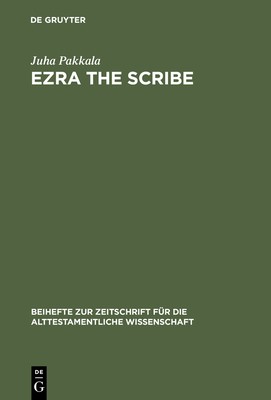
- We will send in 10–14 business days.
- Author: Juha Pakkala
- Publisher: De Gruyter
- Year: 2004
- ISBN-10: 3110182807
- ISBN-13: 9783110182804
- Format: 16.8 x 23.5 x 2.3 cm, hardcover
- Language: English
- SAVE -10% with code: EXTRA
Reviews
Description
This monograph investigates the literary development of Ezra 7-10 and Neh 8. With a detailed literary critical analysis, the investigation shows that the text was produced in several successive editorial phases for at least two centuries. Thus the final text cannot be used for historical purposes. The oldest text emerged as a short narrative, entirely written in the third person. It describes how a Torah scribe (Schriftgelehrter) called Ezra came from Babylon to Jerusalem to reinstate the written Torah. In the later editorial phases, Ezra's role was transformed from a scribe to a priest who brought cultic vessels to the Temple. The editorial development reveals that the text was originally influenced by Deuteronomy and the (Deutero)nomistic theology. Later, it came under priestly and Levitical influence.
EXTRA 10 % discount with code: EXTRA
The promotion ends in 15d.01:08:58
The discount code is valid when purchasing from 10 €. Discounts do not stack.
- Author: Juha Pakkala
- Publisher: De Gruyter
- Year: 2004
- ISBN-10: 3110182807
- ISBN-13: 9783110182804
- Format: 16.8 x 23.5 x 2.3 cm, hardcover
- Language: English English
This monograph investigates the literary development of Ezra 7-10 and Neh 8. With a detailed literary critical analysis, the investigation shows that the text was produced in several successive editorial phases for at least two centuries. Thus the final text cannot be used for historical purposes. The oldest text emerged as a short narrative, entirely written in the third person. It describes how a Torah scribe (Schriftgelehrter) called Ezra came from Babylon to Jerusalem to reinstate the written Torah. In the later editorial phases, Ezra's role was transformed from a scribe to a priest who brought cultic vessels to the Temple. The editorial development reveals that the text was originally influenced by Deuteronomy and the (Deutero)nomistic theology. Later, it came under priestly and Levitical influence.


Reviews